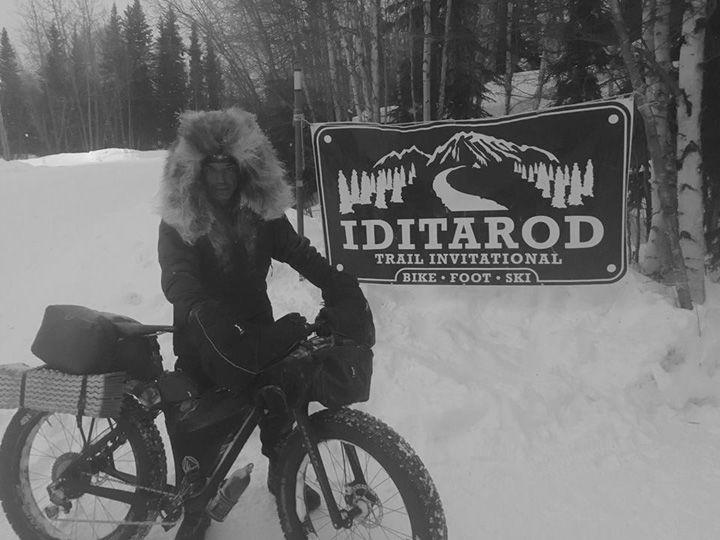Professor’s journey to “The Last Great Race on Earth”
Up next for philosophy professor Jose Luis Bermudez: a 1,000-mile bike journey through the Alaskan winter to raise money for charity.

By
Texas A&M philosophy professor Jose Luis Bermudez is no stranger to cross-country bicycling.
He’s participated in Race Across America for many years, traveling up and down the country and from coast to coast. In a few weeks, however, he’ll face one of his most harrowing rides yet — a 1,000-mile bike journey through the dead of the Alaskan winter in an attempt to raise $20,000 for charity by riding the path of the Iditarod dogsled races.
While Bermudez has ridden his bicycle in the unforgiving Alaskan winters in the past — he completed a 350-mile snowy journey there in 2018 — on Feb. 24 he’ll be one of only 17 people completing the 1,000-mile Iditarod Trail Invitational. The race is completed in one of three categories: 150 miles, 350 miles and 1,000 miles, and participants are selected based on their experience with cross-country racing and mountaineering and must complete the 350-mile race to gain eligibility. The Iditarod website describes the race as a self-reliant feat, as cyclists will traverse through snow and temperatures reaching minus-50 degrees Fahrenheit, all without any support or assistance other than that which they provide themselves.
The race begins Feb. 24 in Anchorage and will end in the town of Nome anywhere from 16 to 30 days after the start, depending on each participant’s pacing. Bermudez noted that the annual Iditarod dogsled races will begin one week following the start of the bike race, and the cyclists will get to see the dogs pass by between the 500th and 800th mile.
“There are no roads in this part of the world,” Bermudez said. “There are only trails made by snowmobiles, and if it’s snowed recently there are no trails, so you just have to bike through the snow.”
While a cyclist may be able to bike between speeds of 3 to 7 mph on unhindered roads, pushing a bike through snow drifts can typically only be done at about 2 mph, he said. During the night, each cyclist will dig a trench in the snow and burrow into their sleeping bag. The key will be to keep moisture out of one’s clothes, Bermudez said. It will be important not only to layer on thick protective gear, but also to keep from sweating, as sweat can freeze up and become dangerous to the body in such cold weather. Though racers will have some opportunities to stop off in tiny Alaskan villages to gather supplies, many stretches of the race will be completed without contact with civilization. The race will also travel over frozen rivers and other bodies of water.
“I think there have been cases of frostbite during this race,” Bermudez said. “But no one has been killed. … There will be nothing but caribou, moose, wolves and empty space. It will be incredible. It’s not a very forgiving environment. It’s very hostile.”
Bermudez said he is both excited and scared. He’s been able to train a few times in the past two years up in Alaska, but mostly is forced to bike gravel roads in Grimes County to try and loosely simulate some of the physical struggle he will face. He noted that he has had extensive experience in blistering cold climates, as he has taken part in expeditions to the Karakoram Himalaya in Northern Pakistan and made the ascent of Hidden Peak [Gasherbrum 1], one of the tallest mountains the world.
Why is he taking part in such a dangerous race?
“I’ve kind of run out of other bike races to do.”
Another great motivator for Bermudez, however, is the money his race might raise for his favorite charities and nonprofits. This year, he hopes to gain sponsorships from friends and supporters, ultimately raising up to $20,000 for three organizations: Bryan/College Station Habitat for Humanity, Joy Ride and Ranch Critters Equine Sanctuary.
Originally posted here.
